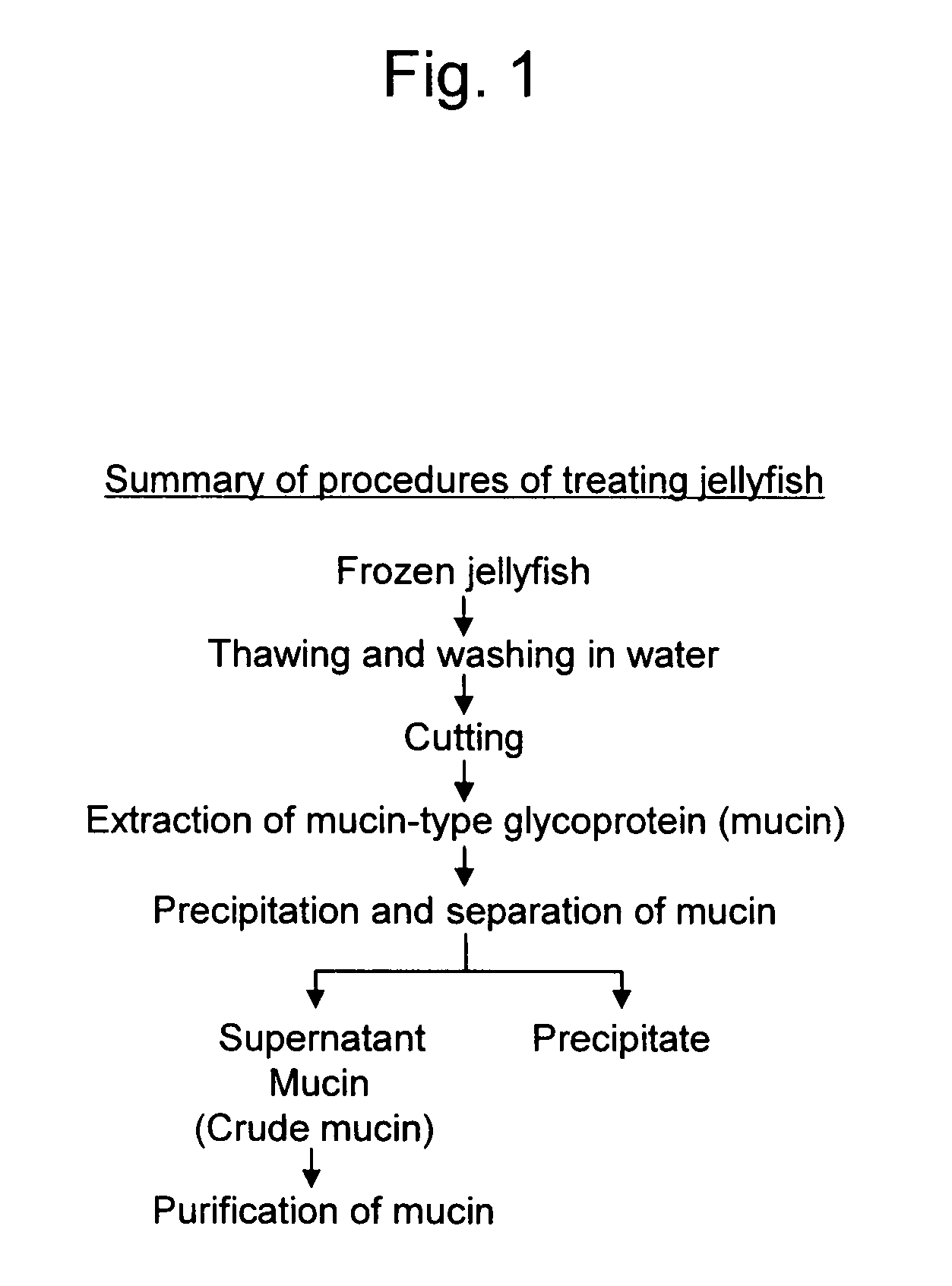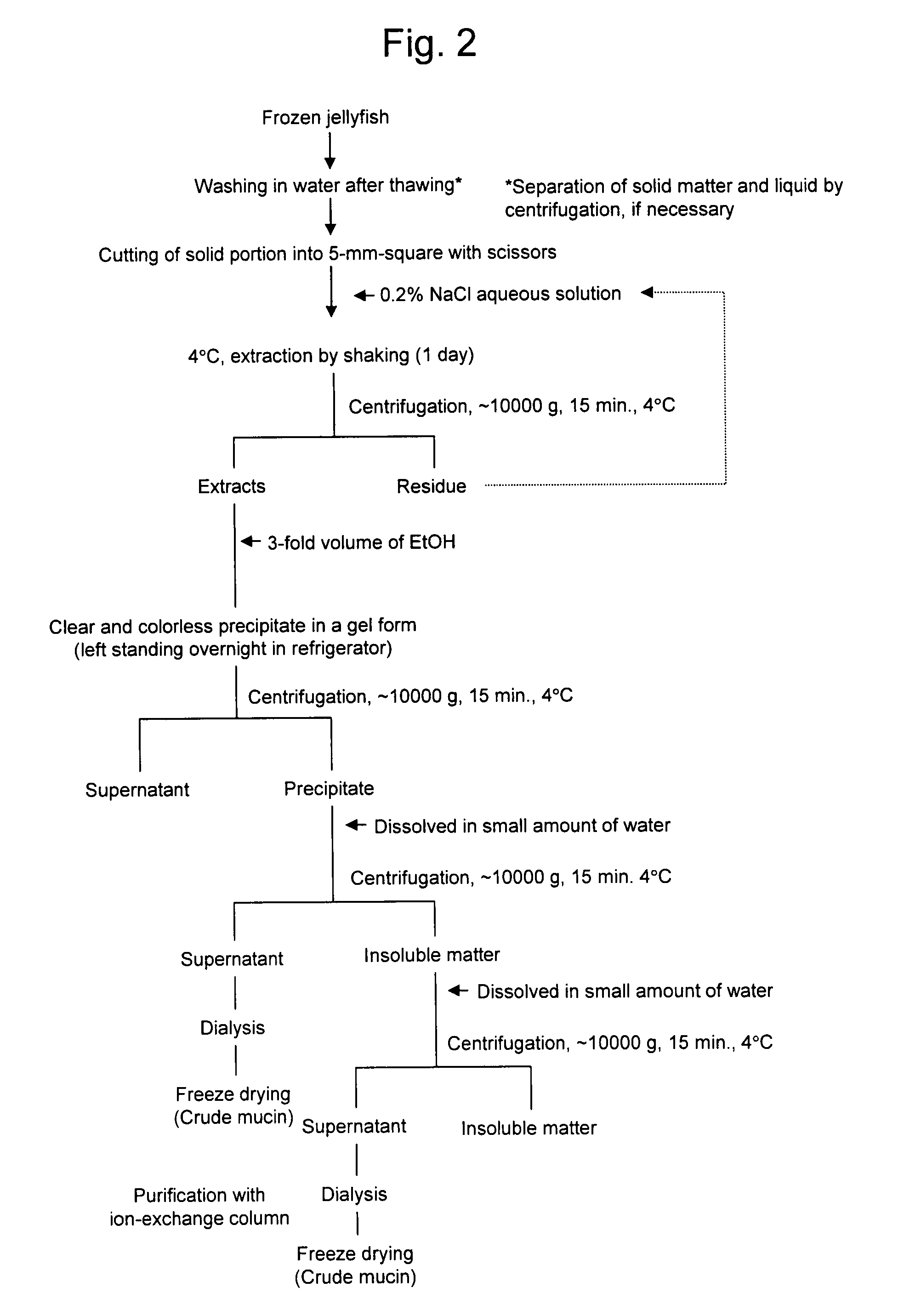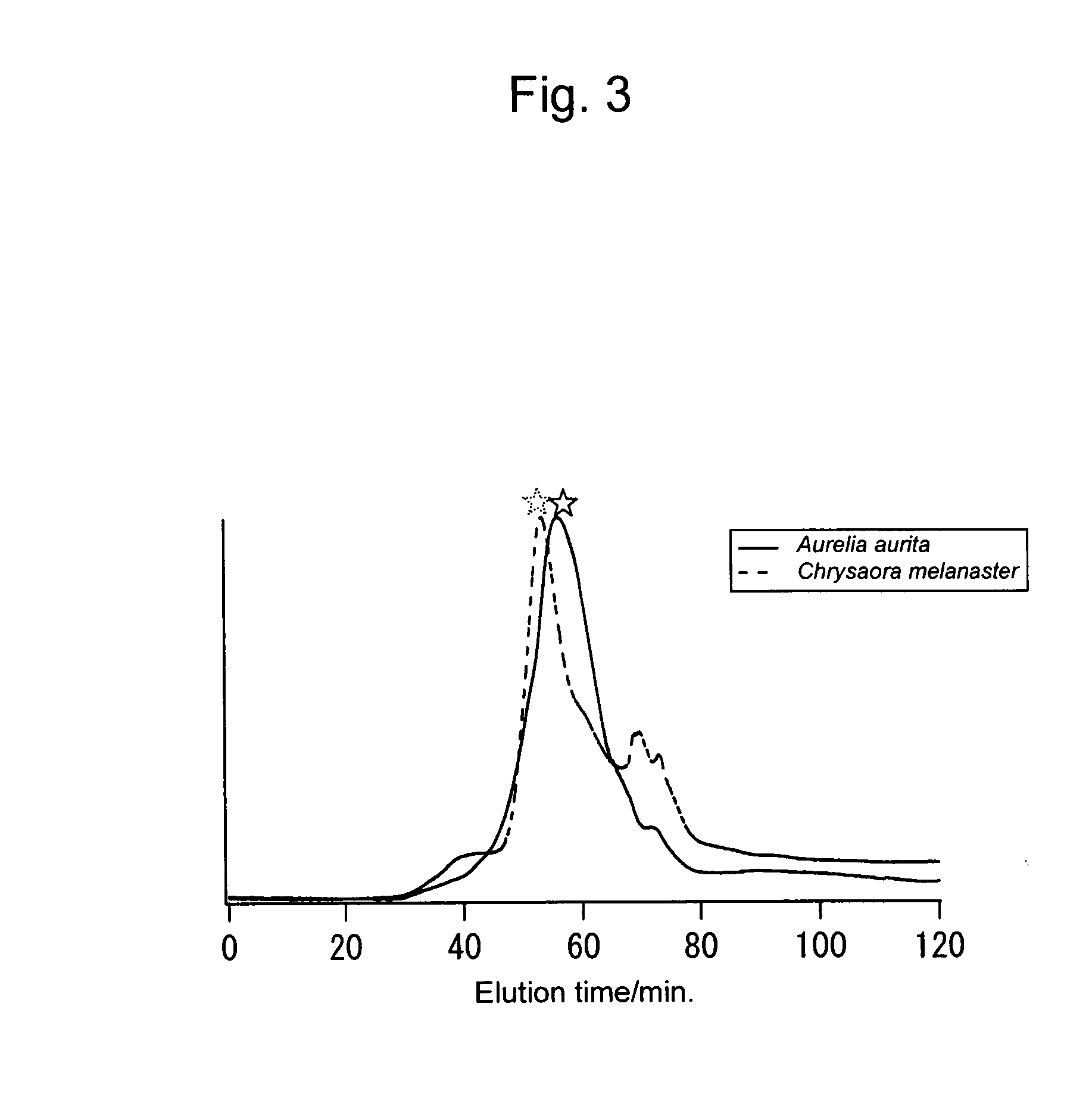Novel mucin-type glycoprotein and use thereof
a glycoprotein and mucin-type technology, applied in the field of new mucin-type glycoproteins, can solve the problems of unsuitable large-scale production, unsuitable gene transfer or cloning approaches, and inability to find the appropriate method for synthesizing them, and achieve the effect of superior economic and environmental preservation techniques and easy production in large quantities
- Summary
- Abstract
- Description
- Claims
- Application Information
AI Technical Summary
Benefits of technology
Problems solved by technology
Method used
Image
Examples
example 1
[0118]Crude mucin serving as a precursor of a novel mucin-type glycoprotein according to the present invention was extracted from moon jelly (Aurelia aurita) and brown jellyfish (Chrysaora melanaster) by the following method, as shown in FIG. 2:
1) A whole jellyfish in a frozen state was thawed and then washed in water, and solid matter and liquid were separated by centrifugation;
2) The remaining solid portion was cut into fragments of approximately 5 mm to 1 cm square with scissors;
3) The fragments were subjected to degreasing and dehydration by acetone treatment and then swollen with water;
4) The solid sample was added to a 0.2% NaCl aqueous solution and subjected to extraction by shaking at 4° C.;
5) The solution from step 4 was centrifuged at 4° C. at 10000 g for 15 minutes;
6) To the extracts from step 5, 3-fold volume of ethanol was added to give precipitates in a gel form;
7) The solution from step 6 was left standing overnight in a refrigerator and then centrifuged at 4° C. at 1...
example 2
[0119]The crude mucins from two jellyfishes obtained in Example 1 were subjected to ion-exchange liquid chromatography, and peaks with asterisks shown in FIG. 3 were purified to thereby obtain mucin-type glycoproteins with high purity.
[0120]Conditions for chromatography used are as follows:
[0121]TSK gel DEAE-ToyoPearl 650M 25 mm i.d.×150 mm
[0122]A: 10 mMNaPi, pH 7
[0123]B: 0.5 M NaCl / 10 mM NaPi, pH 7
[0124]flow 2 ml / min, detector UV (215 nm)
[0125]gradient 0-60 min (% B: 0-100)
[0126]sample: Moon jelly (Aurelia aurita)[0127]5 ml (2 mg / ml crude mucin / 10 mM NaPi solution)
[0128]Brown jellyfish (Chrysaora melanaster)[0129]1.3 ml
example 3
[0130]The compounds purified in Example 2 were subjected to constituent amino acid analysis using an automatic amino acid analyzer. Each of the samples (approximately 12 μg each) purified by ion-exchange chromatography and dialyzed as described above was transferred to a hydrolysis tube and evaporated to dryness with a centrifuge evaporator. The dried sample was placed in an outer tube containing constant boiling hydrochloric acid (5.7 N) and sealed under reduced pressure. Hydrolysis was performed at 110° C. for 20 hours by a gas phase method.
[0131]The outer tube was opened, and the hydrolysis tube was subjected to drying in the same way. The dried hydrolysate was dissolved in 100 μl of 0.02 N hydrochloric acid. A high-speed amino acid analyzer L-8500A (manufactured by Hitachi Ltd.) was used in the amino acid analysis of the hydrolysate. The amino acids in the hydrolysate were separated with five buffer solutions using an ion-exchange column according to the special amino acid analy...
PUM
| Property | Measurement | Unit |
|---|---|---|
| molecular weight | aaaaa | aaaaa |
| temperature | aaaaa | aaaaa |
| temperature | aaaaa | aaaaa |
Abstract
Description
Claims
Application Information
 Login to View More
Login to View More - R&D
- Intellectual Property
- Life Sciences
- Materials
- Tech Scout
- Unparalleled Data Quality
- Higher Quality Content
- 60% Fewer Hallucinations
Browse by: Latest US Patents, China's latest patents, Technical Efficacy Thesaurus, Application Domain, Technology Topic, Popular Technical Reports.
© 2025 PatSnap. All rights reserved.Legal|Privacy policy|Modern Slavery Act Transparency Statement|Sitemap|About US| Contact US: help@patsnap.com



